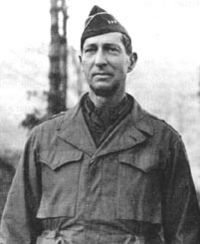Operation Flagpole (World War II) facts for kids
Quick facts for kids Operation Flagpole |
|
|---|---|
| Part of Operation Torch | |
| Operational scope | diplomatic, operational |
| Location | Gibraltar, Algeria |
| Planned | October 16, 1942 |
| Planned by | AFHQ |
| Objective | secure cooperation of Vichy France officers in French North Africa |
| Outcome | successful |

Operation Flagpole was a top-secret mission during World War II. It was a very important part of Operation Torch, which was the plan for the Allies to invade North Africa. The main goal was to get French officers in North Africa to help the Allies. This operation involved a secret meeting between U.S. General Mark W. Clark and a French general named Charles Mast.
Contents
Planning the Secret Mission
On October 16, 1942, a special meeting took place in London. This meeting was held at the headquarters for Operation Torch. Important military leaders were there to plan the secret mission.
Who Was at the Meeting?
Some of the key people at this meeting included:
- Dwight D. Eisenhower, who was the Allied commander for Operation Torch.
- Mark W. Clark, who was Eisenhower's second-in-command.
- Lyman L. Lemnitzer, who planned the invasion.
- Colonel Archelaus L. Hamblen, an expert on shipping.
- Colonel Julius C. Holmes, who handled civilian matters.
- Rear Admiral Bernard H. Bieri, a senior U.S. Navy officer.
- Captain Jerauld Wright, who worked with the British Navy.
Eisenhower told the group about an urgent message. It came from a U.S. diplomat in Algeria, Robert D. Murphy. The message asked for a top-secret group to meet with Général Charles E. Mast. Mast was a French military commander in Algiers. He led a group of French officials who supported the Allies.
The Mission's Goal
This secret mission was called "Operation Flagpole." Its main goal was to get French military forces in North Africa to help the Allies. They hoped Général Henri Giraud, a pro-Allied French officer, would take command. Then, he would arrange a ceasefire with the Allied invasion force. Other leaders, like Jean Darlan and Charles de Gaulle, were not chosen for political reasons.
General Clark was chosen to represent Eisenhower. Lemnitzer was the main planner. Hamblen handled supplies. Holmes was the translator. Wright's job was to talk to the French Navy. He hoped to convince their fleet in Toulon to join the Allies.
Carrying Out the Plan
The group flew to Gibraltar in two large bombers. Gibraltar was the main base for the invasion. On October 19, they boarded a British submarine called HMS Seraph. The submarine was commanded by Lieutenant Norman Jewell.
The Secret Journey
The Seraph carried special equipment for the mission. This included collapsible canoes, submachine guns, and walkie-talkies. Three members of the British Special Boat Section also joined them. These were Captain G.B. Courtney and Lieutenants R.P. Livingstone and J.P. Foot.
The submarine took Clark's team to a small fishing village. This village was called Cherchell, west of Algiers. After midnight on October 21, the submarine came to the surface. Clark's team went ashore. There, they met with General Mast and Robert Murphy.
Meeting the French Leaders
Captain Wright met with a French Navy captain named Jean Barjot. Wright learned that the French Navy did not want the U.S. to enter North Africa. However, the army and air force supported the idea. After many meetings, Clark successfully got the French to agree to help.
On October 24, Clark's team returned to the Seraph. They had some small delays. Later, a seaplane met them and flew them back to Gibraltar. They arrived back in London on October 25.
What Happened Next
Operation Flagpole was a success. It was followed by another mission called Operation Kingpin. In this operation, Général Giraud, who was code-named "Kingpin," was brought to Gibraltar. He had been held in a special area of France.
See also
- US Naval Bases North Africa
- North African campaign timeline
- Operation Husky
- Atlantic Theater aircraft carrier operations during World War II#Allied Invasion of North Africa (1942)


